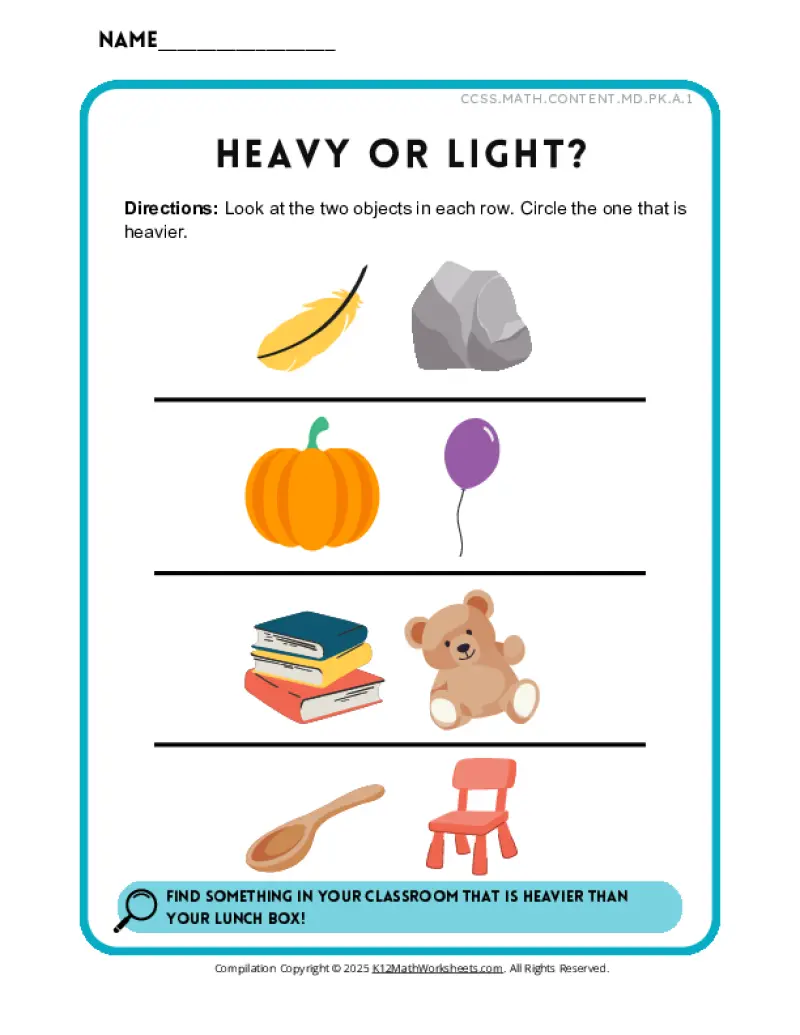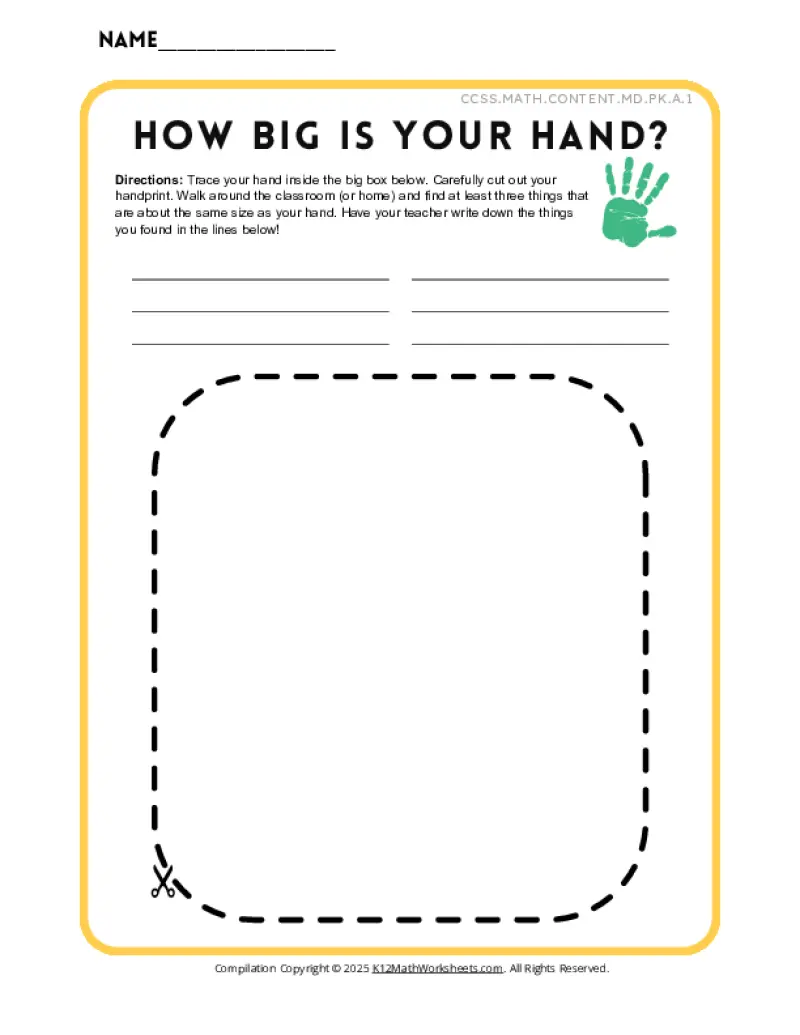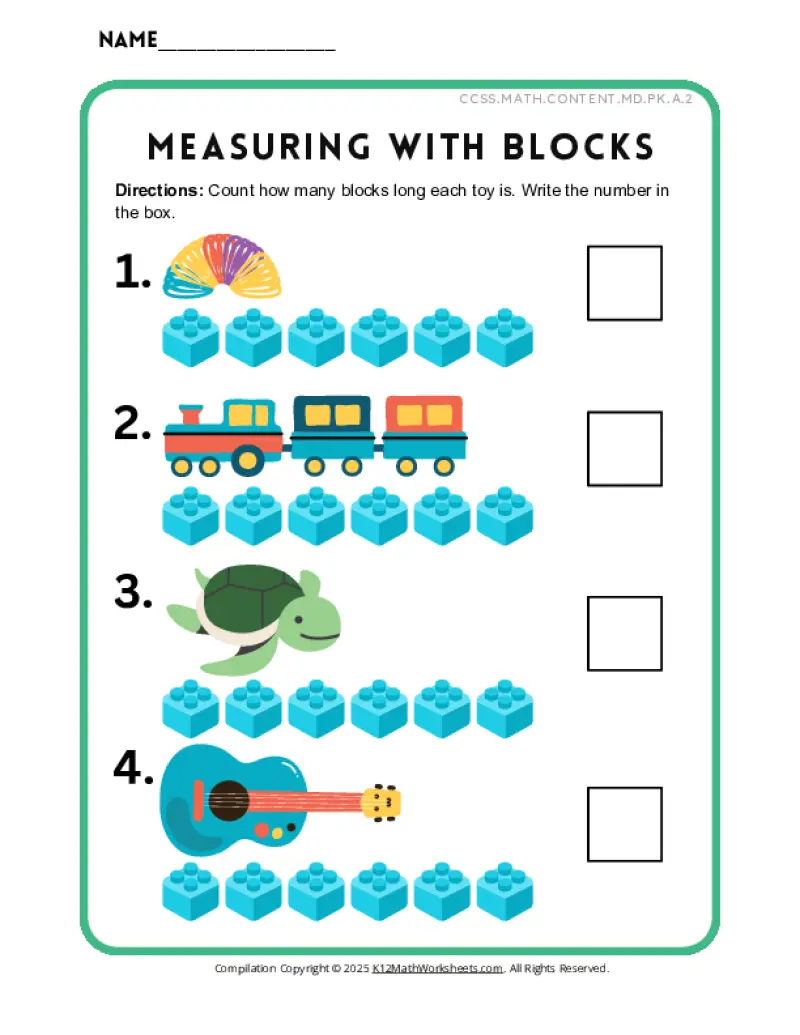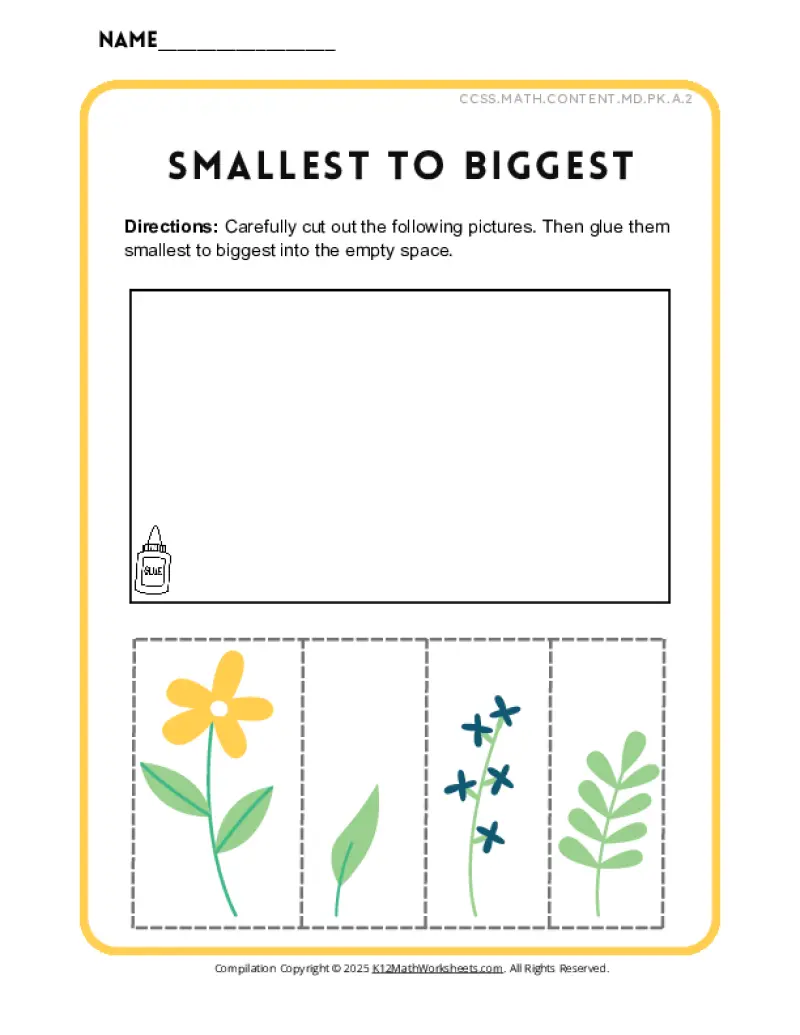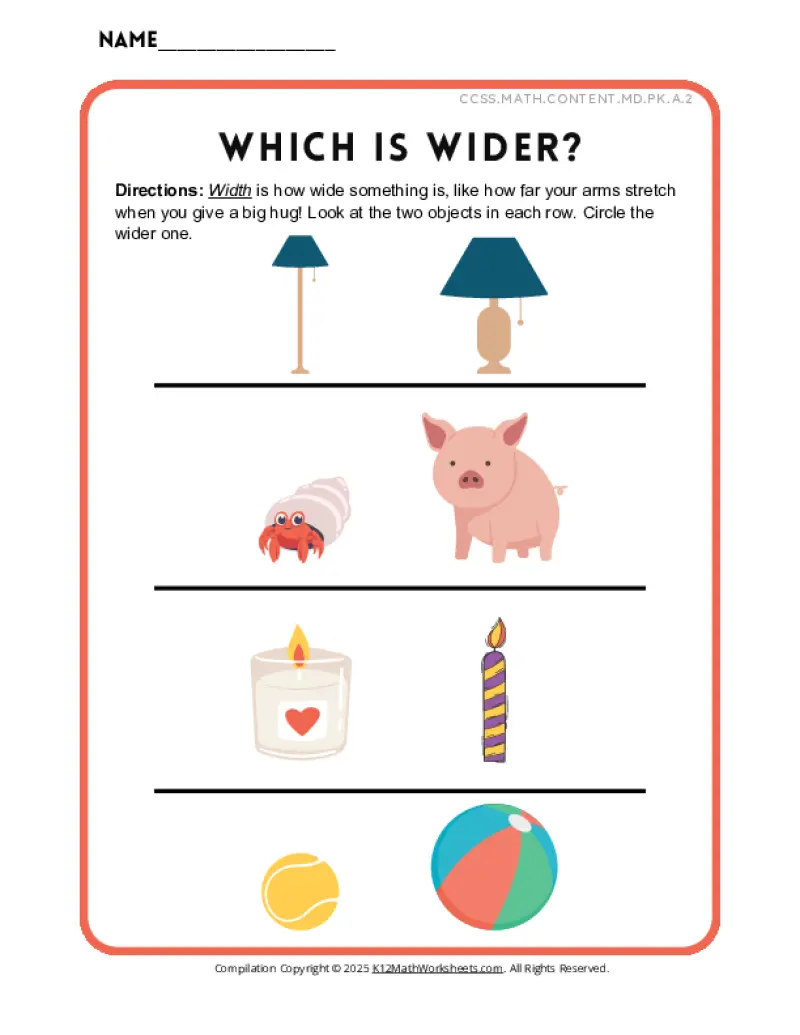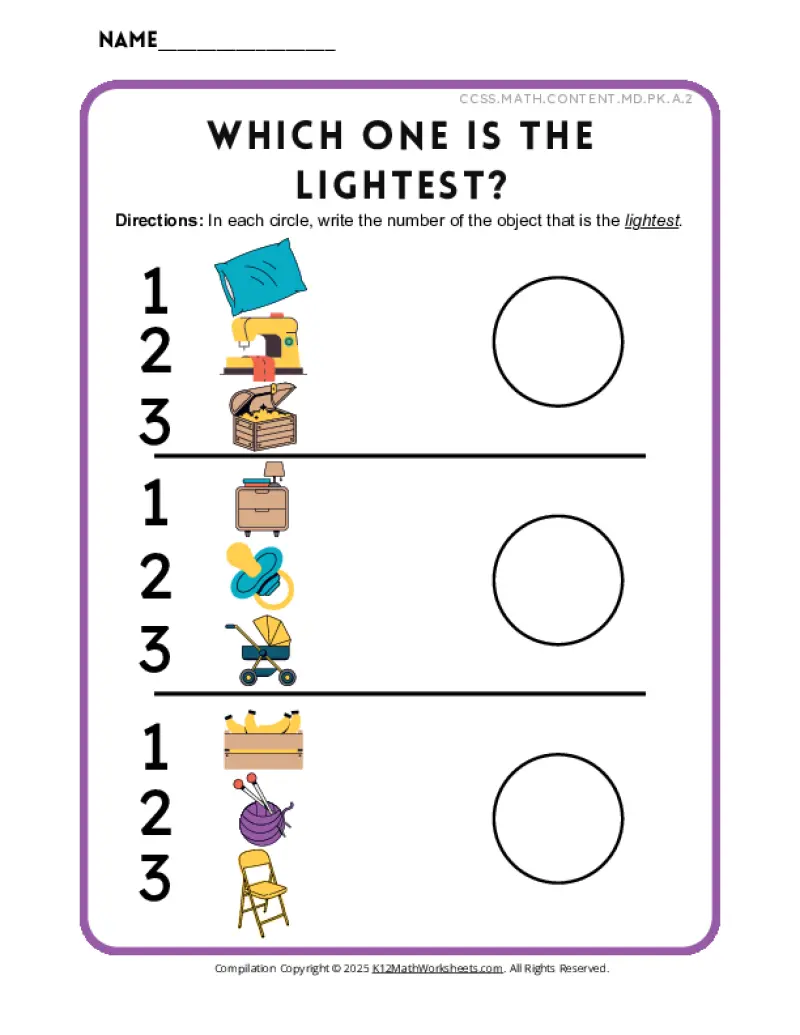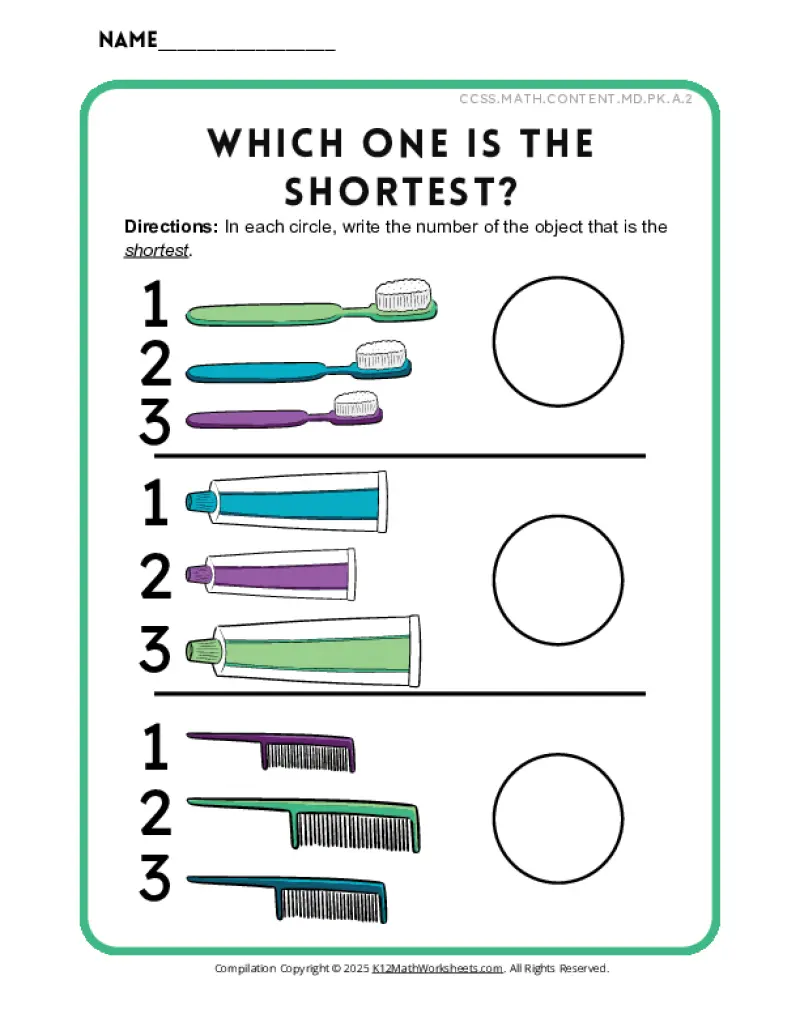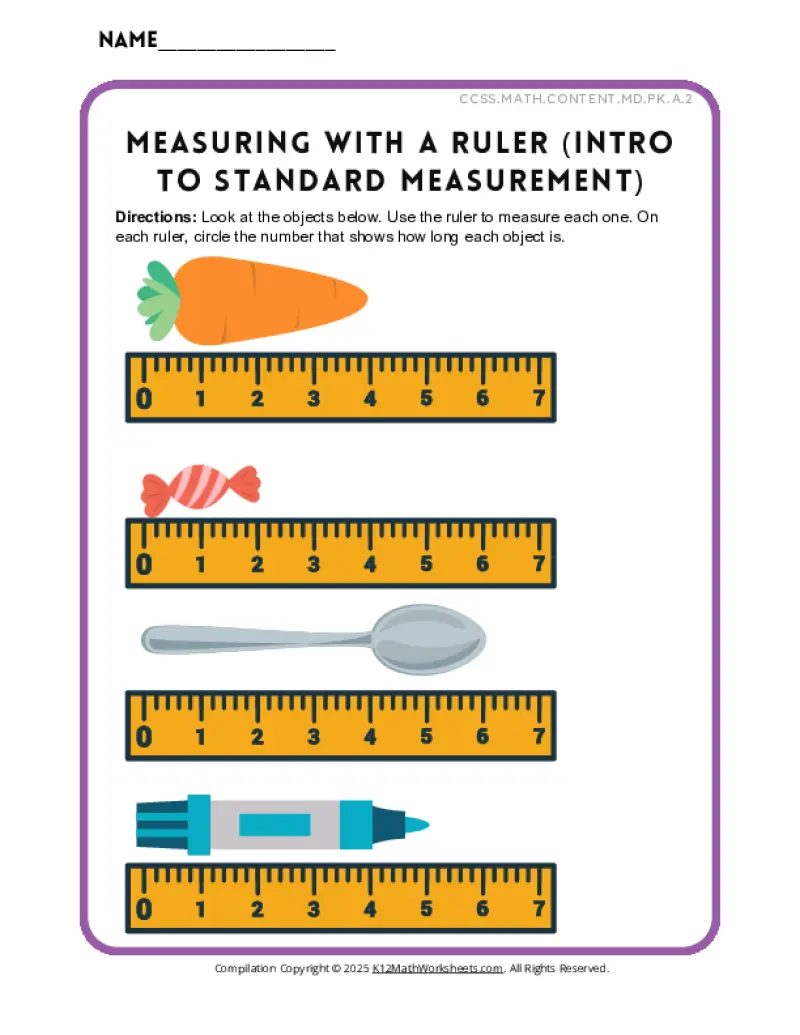Preschool Measurement Worksheets
Preschool Measurement Worksheets

Understanding measurement is an essential early math skill, and these printable preschool worksheets provide hands-on activities to introduce concepts like size, weight, and length. Young learners will engage with a variety of activities designed to develop their ability to compare, measure, and categorize objects based on different attributes.
These worksheets include a range of interactive tasks to reinforce measurement skills. For example, in Empty to Full, children will color glasses to represent different levels, helping them grasp volume concepts. How Big Is Your Hand? encourages kids to trace their hand and compare its size to everyday objects, building awareness of relative measurement. Which Side of the Scale? introduces weight comparison by having children place cut-out objects on the appropriate side of a balance scale. Other activities involve comparing lengths, measuring with blocks, and recognizing differences in width and height.
Printable Pre-K Measurement Worksheets
Students look at the empty cups, keep the first one empty, color the second glass so it’s half-full, the third glass so its full.
Students look at the two objects in each row and circle the one that is heavier.
Kids will trace your hand inside the box, carefully cut out their handprint and then find 3 things about the same size as their hand!
Students look at the two objects in each group and circle the longer object.
This worksheet asks students to count how many blocks long each toy is and then write the number in the box.
For this activity, kids look at the stuffed animals and in each row they will color the smallest one blue, the medium one yellow, and the biggest one red.
For this printable worksheet, your preschooler will carefully cut out the pictures and glue them smallest to biggest into the empty space.
Students will look at the two objects in each row and circle the wider one.
In each circle, kids write the number of the object that is the lightest.
In each circle, kids write the number of the object that is the shortest.
Students carefully cut out and paste the paste the heavy ones onto the lower side of the scale and the lighter ones onto the higher side of the scale.
Your preschooler will look at the objects and use the ruler to measure each one. On each ruler, they will circle the number that shows how long each object is.
Tips for Using Our Preschool Measurement Worksheets
- Use real objects for comparison – After completing How Big Is Your Hand?, encourage students to find items around the classroom that match their handprint for a hands-on learning extension.
- Practice volume concepts with water play – Before doing Empty to Full, let children experiment with filling actual cups of water to reinforce the idea of full, half-full, and empty.
- Pair block measurement with classroom objects – When working on Measure with Blocks, have students measure their own small toys or classroom materials using counting cubes or building blocks.
- Reinforce weight concepts with a balance scale – For Which Side of the Scale?, use a simple balance scale to demonstrate how heavier objects lower one side and lighter objects rise.
- Encourage cutting and pasting for fine motor skills – Smallest to Biggest and Which Side of the Scale? include cut-and-paste activities that help strengthen scissor skills and spatial awareness.
- Use color cues for sorting activities – In Smaller to Bigger, guide students to recognize size order by emphasizing the color-coding instructions (blue for smallest, yellow for medium, red for biggest).


